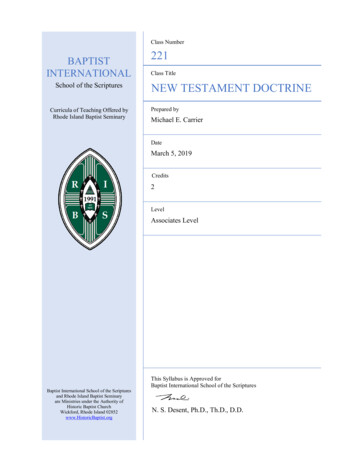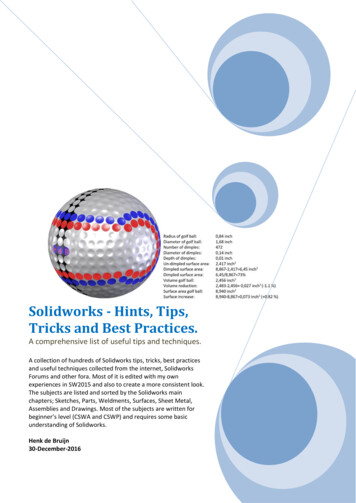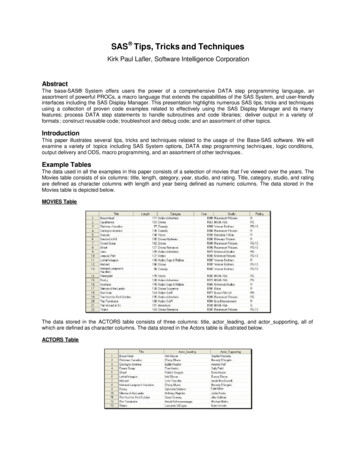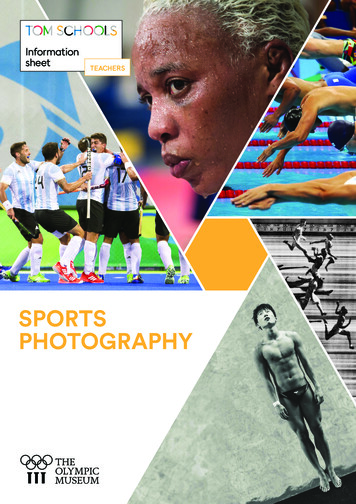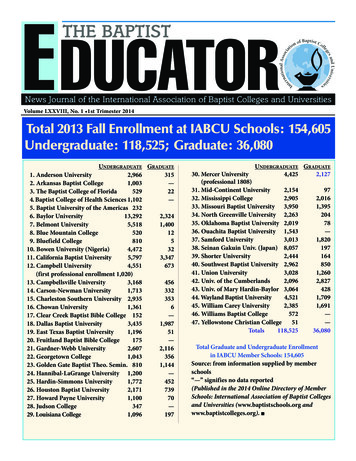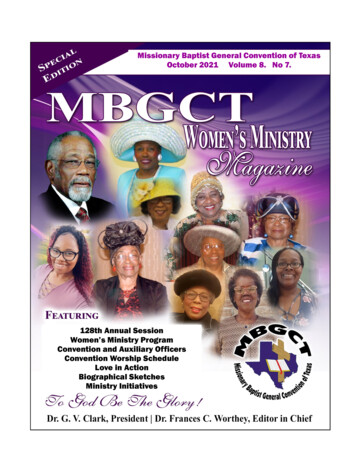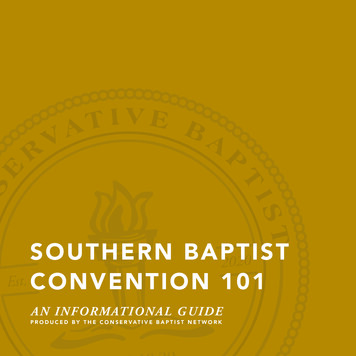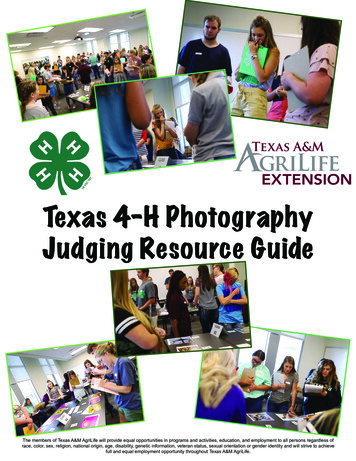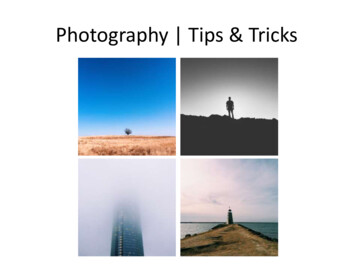
Transcription
Photography Tips & Tricks
IndoorA common problem when shooting indoorsis the lighting. Place the subject near a windowfor natural light. Turn on the flash. The flash can helpby getting sharp images indoors.
OutdoorSunrise and sunsetare the perfect timesto shoot outdoors! Sunrise gives you the nice softfeel to your subject and is not too harsh. Sunset is the “Golden Hour” for lighting.If you’re taking portraits, shoot into the sunand use a flash or a reflector. Cloudy days create even lighting over everythingbecause clouds are considered a giant diffuser.
Night Time PhotosNight time photos can be tricky at first.The key is to have a tripod! Use a tripod to prevent motion blur in the photo. Crank your shutter speed down (1/30 or lower)and your ISO up (800 or higher) to capture thelimited light. Use the timer mode or a remote to take the shotwithout moving the camera. If it is people your wanting to take photos of, use aflash. Then you won’t need go through the pointsmentioned above to get a decent shot.
Posing Groups When photographing large groups of people your primarygoal is to get everyone in the group clearly visible. Start withgetting head to toe shots then you can zoom in. Realize you will not be able to control each persons pose. Imaginethe whole group as a single object, make sure everyone is visible. There are friendly ways to pose in a casualmanner. Mix arm placement aroundshoulders or waist.***A great group shot option is to shoot from an elevated angle.Use a balcony or climb a ladder to gain height and an interesting angle.
Head ShotsThe most important thing is makingsure the eyes are in focus and areexposed correctly.Frame someone where their shoulders‘touch’ either side of the frame.Either shoot straight at your subject orshoot slightly down.Make sure your lighting is even, andavoid use of a distracting background.Blurred or solid backgrounds workthe best.
Framing Your ShotThink of framing your shot in a unique way.Use people, branches, windows, arches, doorways for visual interest.1.2.3.4.Framing Your Shot:Gives the photo contextGives images a sense of depth and layersLeads the eye towards your main focal pointIntrigues your viewer
Taking Event PhotosWhether it is a gathering, activity, convention, etc. they all should have the documentary style of shots.Basically you want CANDID photos with a couple posing shots every now and then. Try to be discrete and not be in the way but at the same time be there to get every moment.Try not to use flash photography. It can be very distracting.Get up close but once again stay out of the way.Take pictures through the whole event so nothing is missed.Change the perspective, show emotion and expression.Use what is around you to get a good shot. Shoot from the balcony, get down on one knee, etc
Mission TripsTake A LOT of photos! Shoot around 300 photos a day. Take photos of the landscape and architecture around you. Be creative if you aren’t allowed to show faces in photos. Whether it’s theback of heads, hands, silhouettes, creative angles, etc. Think of ways to notinclude the face.***When taking camera equipment, bring a backpack stylecamera bag to discourage stealing.***
Smartphone PhotosSmartphones have become such an improvement, and evendoing better than most point and shoot cameras. It just dependson how you do it. You want to use the smartphone like any other camera, hold it steady!Don’t use the flash as much as possible.Change your position if shadows/highlights are overpowering the photo.Get a free editing app to enhance the photo. A little enhancement can change the mood ofthe photo or just make it plain cool.
Sports PhotographyTaking photos at sports events orfast action events can be tricky. A longer telephoto lens; 85mm or larger, is recommended. This helpsyou stay out of the way and still get those up close shots. Lighting will be tricky. Have good light or else it will be verychallenging to get non blurry shots. Set your shutter speed to 1/200 or higher tocapture that crisp shot with no motion bluror set your camera mode to sports. Set your camera settings to continuous mode.This setting will allow you to take severalphotos at a time to get that perfect shot.
Camera Recommendations 150 300Nikon CoolPix S6500 / 169.95Canon PowerShot ELPH 530 HS / 138.00Sony Cyber-Shot DSC-WX80 / 138.00Panasonic Lumix DMC-SZ3 / 121.00Nikon CoolPix P520 / 376.95Canon PowerShot SX40 HS / 314.00FujiFilm FinePix HS35EXR / 309.00Panasonic Lumix DMC-FZ70 / 277.00 500Canon EOS Rebel T3i DSLR with EF-S 18-55mm IS II Lens / 569.00Canon Power Shot G16 Point-and-Shoot / 549.00Sony Alpha SLT-A58 DSLR with DT 18-55mm SAM II Lens / 498.00Nikon D3200 DSLR with AF-S DX Nikkor 18-55mm VR Lens / 496.95 750Canon EOS Rebel T5i DSLR with EF-S 18-55mm IS STM Lens / 799.00Nikon D5200 DSLR with 18-55mm Lens / 796.95 1000 Nikon D7100 DSLR with 18-140mm VR DX Lens / 1,446.95Nikon D5300 DSLR with 18-140mm VR DX Lens / 1,396.95Canon EOS 70D DSLR with 18-55mm STM Lens / 1,249.00Canon EOS 60D DSLR with EF-S 18-200mm IS Lens / 1,099.00
Equipment RecommendationsHere are examples of great external flashes. Canon 430EX II Speedlight TTL Flash 300 Nikon SB-700 Speedlight Flash 325 Any tripod that is sturdy and not cheap. Extra batteries and memory cards are a must. Camera bag, whether a side bag or backpack style.
Sports Photography Taking photos at sports events or fast action events can be tricky. A longer telephoto lens; 85mm or larger, is recommended. This helps you stay out of the way and still get those up close shots. Set your camera settings to continuous mode. This setting will allow you to take several photos at a time to get that .
